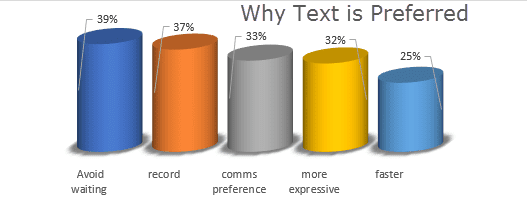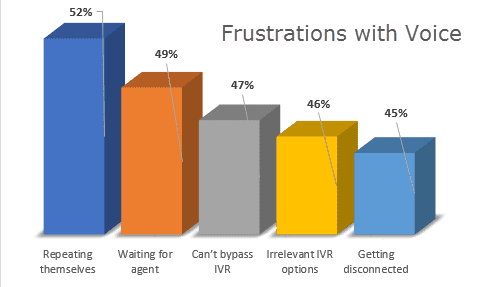 Avoid solving a problem with a bigger problem – this was the first tip shared by Sol Rabinowicz, CEO of Premier Contact Point, during his keynote presentation at Customer Contact Week on the Gold Coast earlier this year.
Avoid solving a problem with a bigger problem – this was the first tip shared by Sol Rabinowicz, CEO of Premier Contact Point, during his keynote presentation at Customer Contact Week on the Gold Coast earlier this year.
What does this mean exactly?
It means that before implementing a strategy to fix an issue or make an improvement, think about the needs of all stakeholders, and all potential outcomes.
Will the fix work for all?
At a major contact centre conference last year, a representative from one of Australia’s leading telco companies stood in front of his peers and acknowledged they had gone too far in trying to push their customers to self-serve through digital channels.
They had tried to improve customer experience by increasing speed and efficiency, but in doing so they went too far. They made it harder for their customers to find assisted and live help when they needed it, which increased customer frustration, reduced satisfaction, and increased customer churn.
In the end they recognised the need to get the balance right between digital, self-service, and live channels, and reoriented their investment and processes accordingly.
An expensive lesson. How could this have been avoided?
Perhaps the telco could have trialled the digital self-service channels with a representative sample of customers first, and gotten their feedback, before implementing across the board?
Perhaps not. The real issue wasn’t implementing digital self-service. The problem was putting up barriers to reach live or assisted help.
Which makes you wonder what the real goal was. Was it to improve speed and efficiency for customers, or was it to reduce inbound calls?
Customer behaviour and preferences are key
When solving problems relating to delivery of customer service, it’s vital that the customer voice is heard and that their preferences are the key driver of the solution.
When and why do customers prefer voice?
A very interesting study by US vendor Interactions.com and Harris Poll sought to understand why customers prefer one channel over another – beyond mere generational preference.
What they found is that consumers are split roughly 50/50 between voice and text. More relevantly they found that choice of channel MAY be driven simply by frustration with other channels.
Their research found that those who prefer voice, do so when speed and efficiency is an issue.
 Simply easier to have a conversation 61%
Simply easier to have a conversation 61%- Faster resolution 57%
- More effective resolution 54%
- Better to express myself 52%
- Less likely to create misunderstanding 51%
Voice is also preferred for more difficult enquiries – where there is more than one issue to address, extra support is required, or where convenience or security is an issue.
These findings contradict the strategy implemented by the Australian telco. Consumers prefer voice for speed and efficiency, not digital self-service.
When and why do customers prefer text?
Conversely, those who preferred text did so mainly to avoid wait time, keep a record of the conversation or simply because they prefer texting over voice.
 Avoid wait time 39%
Avoid wait time 39%- Record of conversation 37%
- It’s the way I typically communicate 33%
- Better to express myself 32%
- Faster resolution 25%
So this and other studies show that voice is preferred for speed and efficiency.
Yet most organisations use old or poorly designed technologies to deflect to self-service or limit the conversation.
 The top reported frustrations with the voice channel were:
The top reported frustrations with the voice channel were:
- Having to repeat themselves 52%
- Waiting for a live agent 49%
- Can’t bypass IVR to get to a live agent 47%
- List of irrelevant IVR options 46%
- Getting disconnected from a call 45%
When fixes causes more problems
As we’ve seen from the first example, sometimes solving a problem can create more problems and consequences.
Take automated systems for example. We implement these generally to achieve cost reduction – but this can cause problems.
Speech Recognition is a good example. The reason for using speech recognition software is to make the customer experience of navigating an IVR so much easier. Noble objective. But some speech recognition systems don’t understand customers that well.
They force customers to repeat themselves, or make them speak like a robot just to get their issue or request understood. Just think of your own experiences with Google Home or Amazon Alexa – who spent tens of billions of dollars on speech recognition. The intention is sound, but imperfections in execution mean that customer frustration escalates, and what should have been a major benefit becomes a liability.
But they do deliver 24/7 service and no doubt will improve in the coming years.
The important message here is that while digital channels must and will grow, and will eventually deliver enormous benefits, we must not ease back on voice as the primary channel, because it’s still critical for customer service and by far the best way to build an emotional connection with your brand.
What is needed is investment in the right technology, processes, and staff training, to ensure the frustrations with voice are eliminated. It’s important to balance your spend between digital and voice as part of a CX strategy that put customers’ needs first.
In the next post, we’ll share Tip Number 2 from the keynote presentation.
Ensure Your Voice Channel Is Not Frustrating
Premier Contact Point’s cloud contact centre solution contains all the features you need for now and into the future. Our implementation and support teams will help you design your processes to maximise customer experience.
